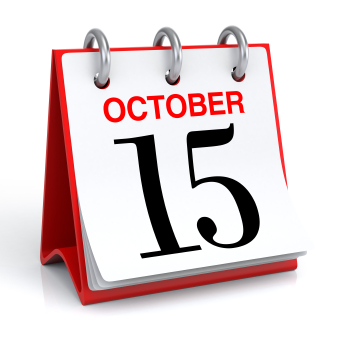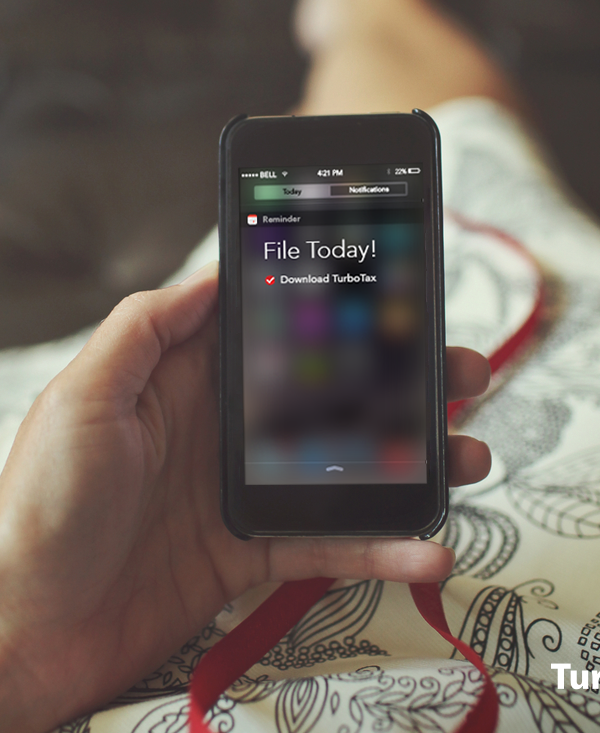[ad_1]
These days, filing your taxes is easier than ever, especially since you can meet with a TurboTax Live tax expert — but there are still documents to gather for tax prep.
Luckily, our tax documents checklist is here to help. To learn what you need to have on hand, take our quiz, fill in your unique information and get your personalized results.
Ready to get started? Take the quiz below!
Filing Taxes: Personal Information and Dependents
First things first, as the taxpayer, you need to gather your and your dependents’ personal information. To make this beginning step of the tax preparation process simple for the following years, keep these important documents in a permanent home in either your home desk or filing cabinet. As you receive tax forms at the beginning of the year, you can stick them in this folder for easy access as you get ready to file.
Here are the personal documents you may need to file your tax return:
- Identification: For you and your dependents, you’ll need a social security number or tax ID number, and a government-issued ID.
- Bank Information: If you choose to receive your refund by direct deposit, you’ll need to provide your routing and account numbers.
- Other records: If you paid for childcare expenses, you’ll need to provide information about the childcare provider (name, address, tax ID number) and how much you spent on childcare for the year. If you are divorced, separated or living apart from your child’s other parent and not the noncustodial parent of a child that you’re claiming, you’ll need the custodial parent to release their right to claim a child to you using Form 8332. If you had a dependent that was a student you will need school records to show if that child was a full-time student for certain credits and deductions.
Filing Taxes: Income and Expenses
Having all the tax documents about your income and expenses will be your ticket to all the deductions and refunds you qualify for. Here’s what you need to file your tax return and where to find that information:
Income Documents
Whether you’re employed, self-employed, or unemployed- there’s a document that is necessary for you to file taxes. Here’s what to do with each type of form:
W-2
You should receive this in the mail, via email, or online from your employer. With TurboTax you can enter your W-2 both manually and via automatic import from over a million employers.
Forms 1099-NECS and 1099-Ks
If you did contract or freelance work for a company that paid you over $600, then you should receive a 1099-NEC from them in the mail or electronically. If a company used a third-party payment network like PayPal or Venmo to pay for services or goods, then you can expect a 1099-K if you received $600 or more total for the year.
Form 1099-G
If you received unemployment income, that amount will be reported on a Form 1099-G form and will typically be sent to you by email or mail from the issuing government agency. Other payments from federal, state, or local governments are also reported on a Form 1099-G such as a state or local income tax refund, credit, or offset you may have received.
Other Income
If you have income from another source, you’ll also need records of those amounts. Here are a few examples:
- Receipts from a rental property or real estate income could be reported on 1099-MISC.
- Retirement income: Form 1099-R.
- Interest or investment dividends: Form 1099-INT, Form 1099-DIV, 1099-OID
- Distributions from a trust: Form 1041 and K-1.
- Royalties: Form 1099-MISC.
- Gambling winnings: Form W2-G.
Expenses and Receipts
Want to take a little money off your tax bill? Some expenses and receipts may come in handy, so grab documents like these:
- Property information: Mortgage interest statements, typically reported on your Form 1098, property tax records and more.
- Medical expenses: Health insurance premiums and out-of-pocket medical expense receipts.
- Childcare expenses: Receipts of what you paid for childcare or pay stubs for childcare payments from a reimbursement account at work.
- Educational expenses: Documents showing amounts paid for tuition, fees and student activity expenses that are required to pay to enroll or attend the school often reported on a 1098-T
Filing Taxes: Deductions and Adjustments
Last up on our tax preparation checklist is everyone’s favorite part: deductions and adjustments. This is where you get to reduce your income and, in turn, lower the taxes you pay. Let’s take a look at the documents you’ll need::
Owned a Home
If you marked that you owned a home last year, then you may need some of the following documents:
- Mortgage interest and refinancing: To find this information, you can look at your 1098 from your lender or mortgage service.
- Property tax bill: This bill may have been sent to you by mail from your local or county tax collector. This information is also often reported on your Form 1098 Mortgage Interest Statement.
- Settlement statement: If you purchased a new home or refinanced it, you’ll be sent a HUD-1 by a creditor.
- Points paid: Points are certain charges paid to obtain a home mortgage. Points are also often called loan origination fees, maximum loan charges, loan discounts, or discount points. You’ll find this information on Form 1098 from your lender.
- Personal property tax: You’ll need this information if property taxes aren’t included on Form 1098.
Affected by Federally Declared Disaster
If you were affected by a federally declared disaster, and are claiming a casualty loss you will need:
- Casualty loss receipts: Deduct expenses from disasters using Form 4684.
Owned a Vehicle
If you purchased a vehicle or signed a long-term lease, and you are filing for tax returns, get the following document ready:
- Vehicle sales tax: To figure out how much you’ve paid in sales tax on your vehicle, either save all the sales receipts and deduct the actual sales taxes paid throughout the year, or use the Internal Revenue Service’s sales tax tables to figure your tax deduction.
Gave Charitable Donations
If you donated to a charity last year, then you’ll need the following information:
- Receipts for charitable donations: Regardless of the amount, keep a record of any contributions of cash, check, or other monetary gifts. This record could be a bank record or a written communication from the organization with its name, the amount, and the date of the contribution. For any contribution of $250 or more, you must have a written acknowledgment of the organization’s name, the amount of money contributed and a statement that no goods or services were provided in return for the contribution. Note that only donations to qualified organizations are allowed as a deduction.
Visited a Medical Professional
If you had qualified unreimbursed medical care expenses, you may be able to deduct some of your expenses if:
- Medical and dental expenses: You can deduct only the part of your medical and dental expenses that are more than 7.5% of your adjusted gross income.
Other Adjustments
If you had any items that could be checked off on the adjustments to income, you can expect to provide the following documents, depending on your needs:
- Form 1098-E student loan interest: If you made federal student loan payments in 2023 you may be eligible to deduct the portion of the interest you paid. Due to the extended pause on student loan repayment and interest by the U.S. Department of Education this may be the first year since your 2019 taxes that you have had interest to deduct. Student loan payments began again in October 2023 and your Form 1098-E includes how much interest was paid for student loans.
- IRA contributions reported on Form 5498: You must report information on the minimum distributions, Roth IRA conversions, rollovers and the fair market value of the IRA account during the year.
- Teacher expenses: If you are an eligible educator, you can deduct qualified expenses of up to $300. If you and your spouse are both eligible educators and married filing jointly you can deduct up to $600.
- HSA, MSA contributions on Form 5498-SA: Reports how much money you contributed to either a HSA or MSA over the course of the tax year.
- Moving expenses: This option is only available for active duty military members.
- Alimony: This adjustment is only valid for divorce or separation agreements before January 1, 2019.
Filing Taxes: Other Deductions and Credit
Let’s dive deeper into what information is needed to handle some deductions and credits that are not as common but can still have great impact on your taxes:
- Non-business bad debt: List the name of the debtor, the efforts you made to collect the debt and why you decided the debt was worthless.
- Receipts for home energy-efficient equipment: Have documentation of the qualified costs used to make your home more eco-friendly.
- Electric vehicle purchase: Have information handy about the type of qualified vehicle that you purchased and how much you paid.
- Health insurance through the Health Insurance Marketplace: You should receive Form 1095-A in the mail or online. Include the premiums you paid, the premium tax credits used and a figure called the second-lowest-cost silver plan.
Don’t worry about knowing these tax rules. Meet with a TurboTax Full Service expert who can prepare, sign and file your taxes, so you can be 100% confident your taxes are done right. Start TurboTax Live Full Service today, in English or Spanish, and get your taxes done and off your mind.
33 responses to “Tax Documents Checklist: How to Win Big This Tax Season”
[ad_2]
Source link











